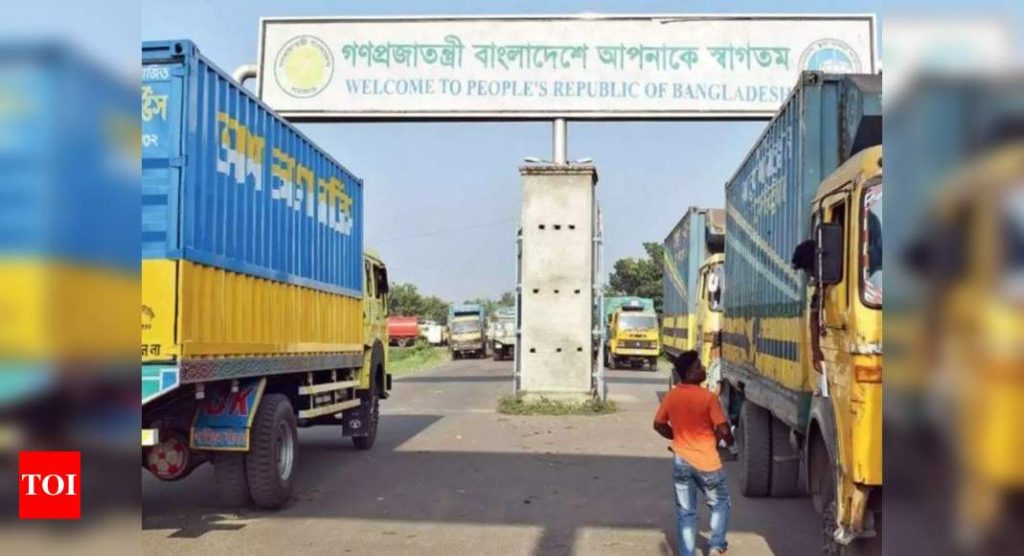India, Bangladesh to make sharp economic gains with seamless transport connect: World Bank report – Times of India

[ad_1]
Removing all border frictions to the movement of trucks between Bangladesh and India could deliver enormous economic benefits to both countries. (Representative image)
NEW DELHI: Seamless transport connectivity between India and Bangladesh has the potential to increase national income by as much as 17% in Bangladesh and 8%in India, a World Bank report said on Tuesday.
It said that strengthening the Bangladesh-Bhutan-India-Nepal motor vehicles agreement (MVA) could transform regional transportation in eastern South Asia and bring significant economic gains to Bangladesh and India.
Removing all border frictions to the movement of trucks between Bangladesh and India could deliver enormous economic benefits to both countries.
The report said that bilateral trade accounts for only about 10% of Bangladesh’s trade and a mere 1% of India’s trade. Whereas, in East Asian and Sub-Saharan African economies, intraregional trade accounts for 50% and 22% of total trade, respectively.
In fact, it is about 15–20% less expensive for a company in India to trade with a company in Brazil or Germany than with a company in Bangladesh, the report said. High tariffs, para-tariffs, and nontariff barriers also serve as major trade barriers. Simple average tariffs in Bangladesh and India are more than twice the world average, it said.
The report recommends key policy actions countries should take to strengthen the MVA. These include harmonising driver’s licensing and visa regimes, establishing an efficient regional transit regime, rationalising and digitising trade and transport document and liberalising the selection of trade routes.
Weak transport integration makes the border between Bangladesh and India thick. Crossing the India–Bangladesh border at Petrapole–Benapole, the most important border post between the two countries takes several days.
In contrast, the time to cross borders handling similar volumes of traffic in other regions of the world, including East Africa, is less than six hours, the report highlighted.
At present, Indian trucks are not allowed to transit through Bangladesh. As a result, the northeast of India is particularly isolated from the rest of the country and connected only through the 27-km-wide Siliguri corridor, also called the “chicken’s neck”. This leads to long and costly routes.
Goods from Agartala, for example, travel 1,600 kilometres through the Siliguri corridor to reach Kolkata Port instead of 450 kilometres through Bangladesh.
If the border were open to Indian trucks, goods from Agartala would have to travel just 200 kilometres to the Chattogram Port in Bangladesh, and the transport costs to the port would be 80% lower, the report said.
FacebookTwitterLinkedinEMail
[ad_2]
Source link







